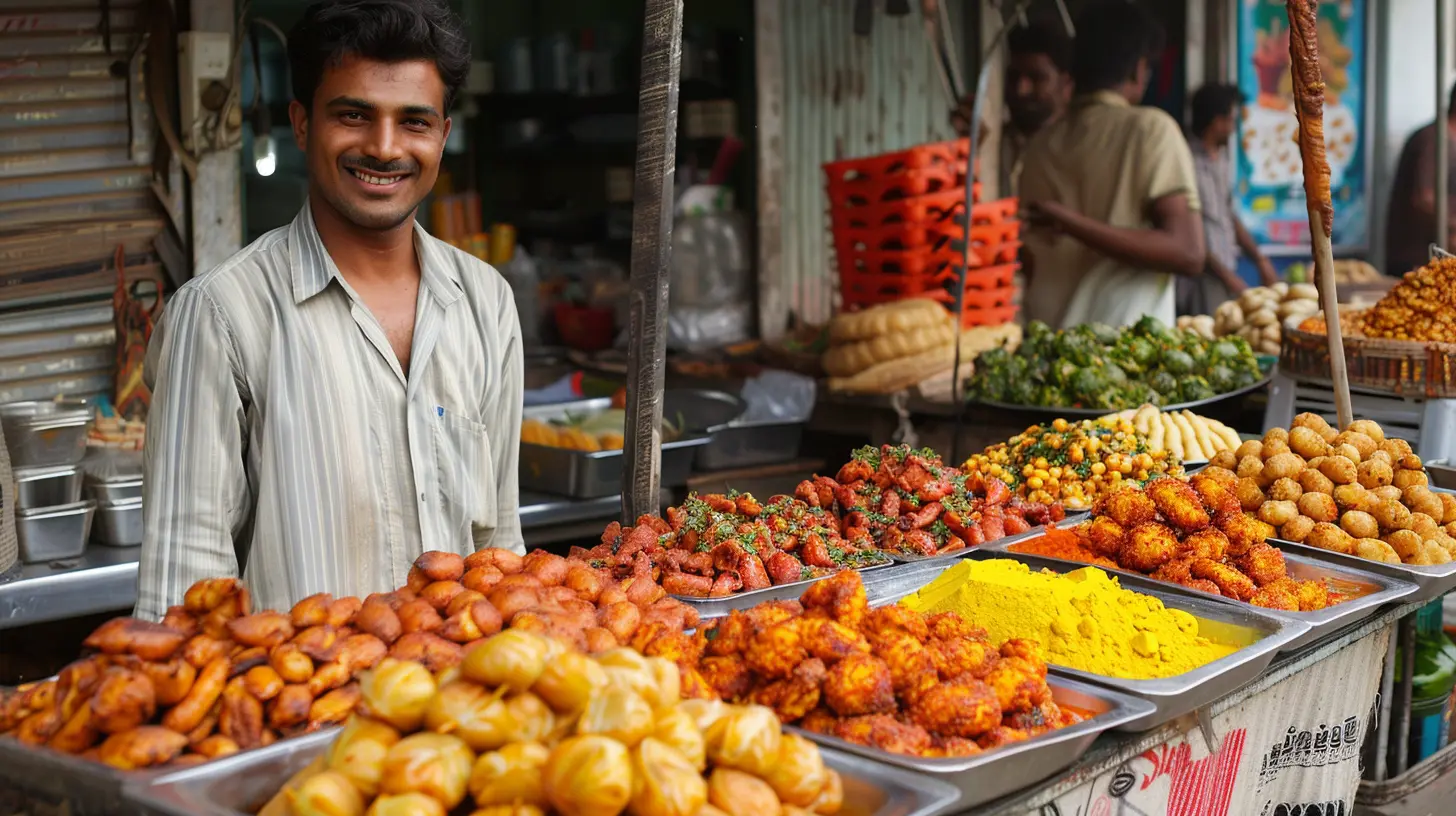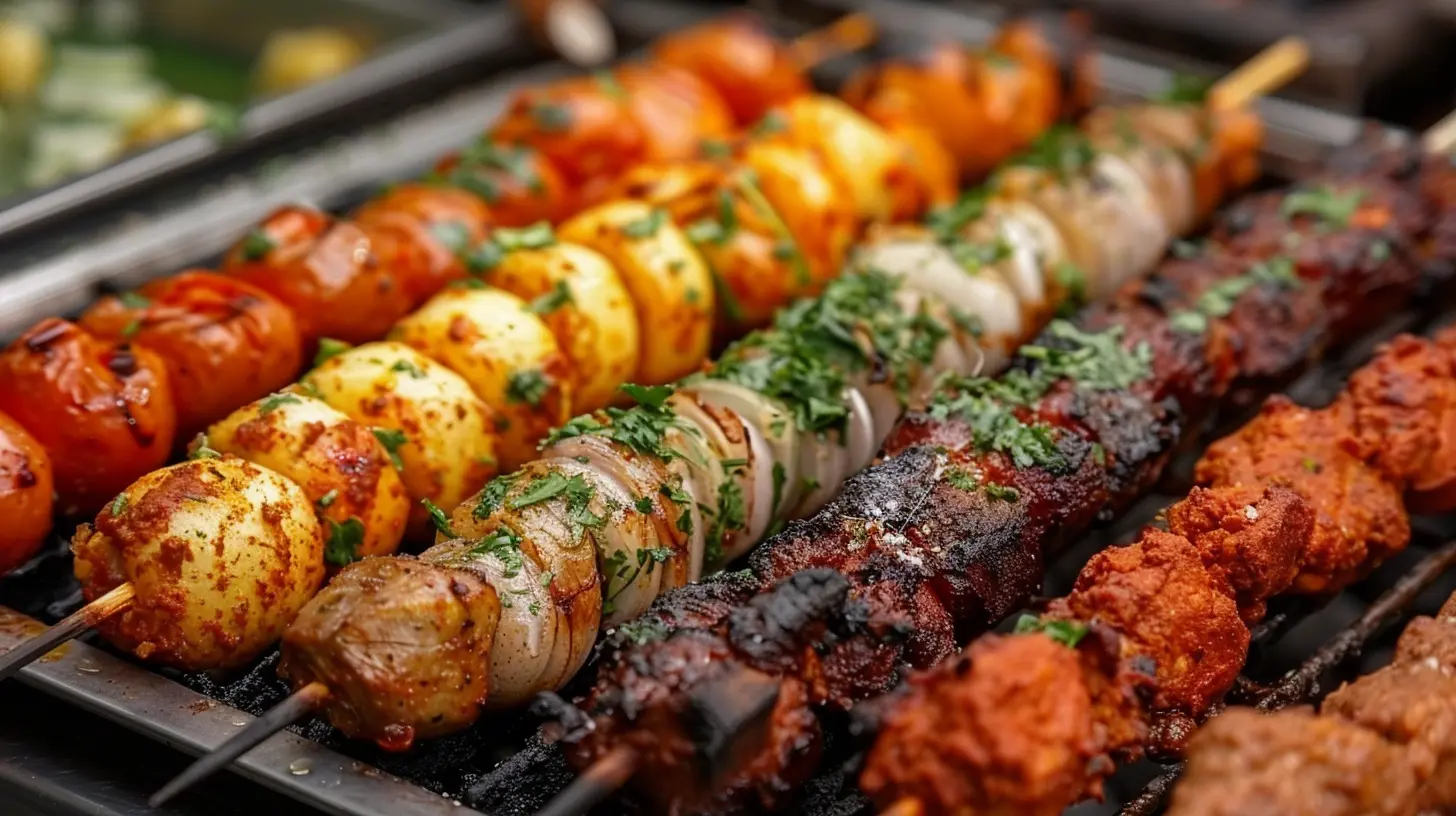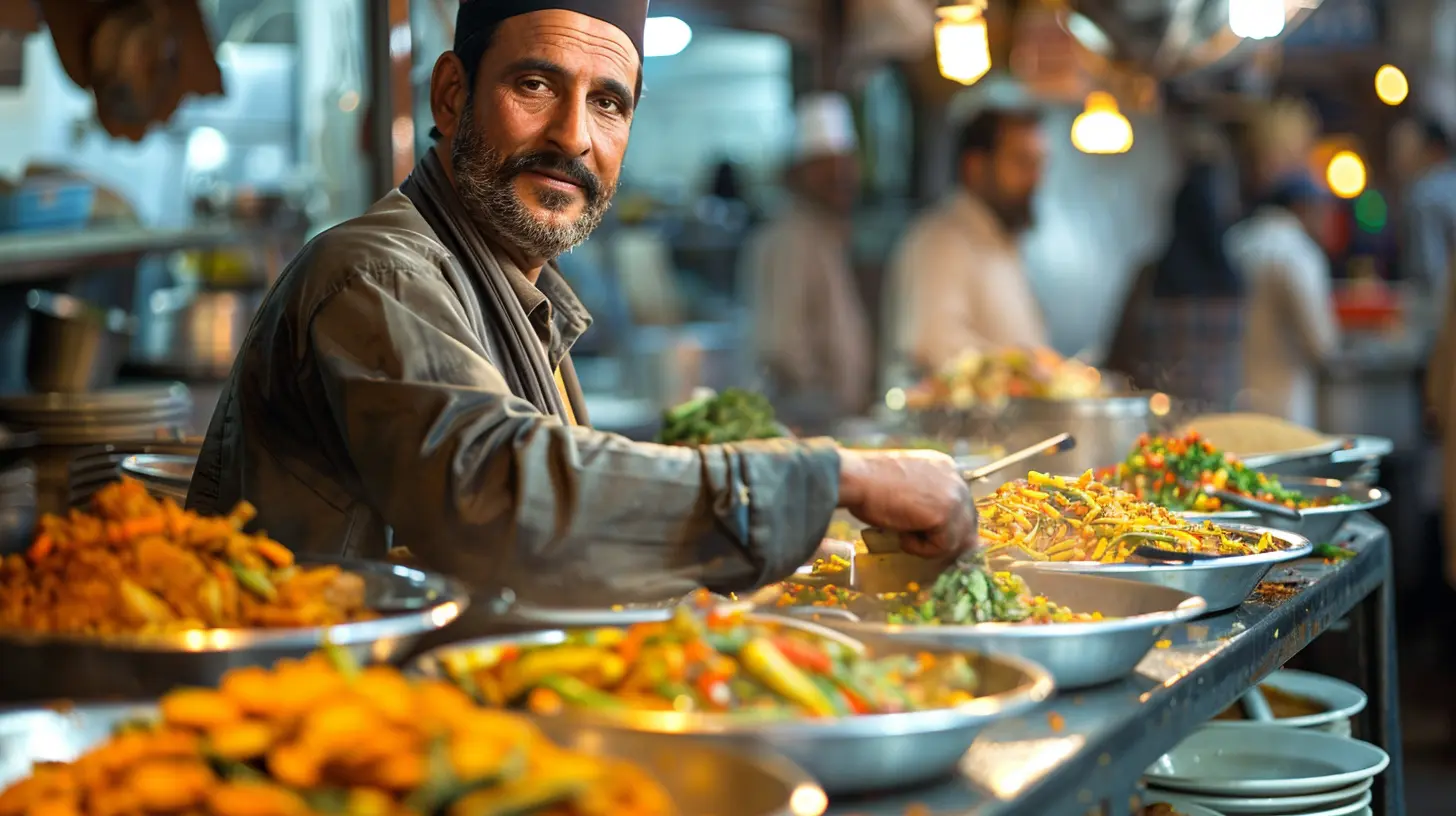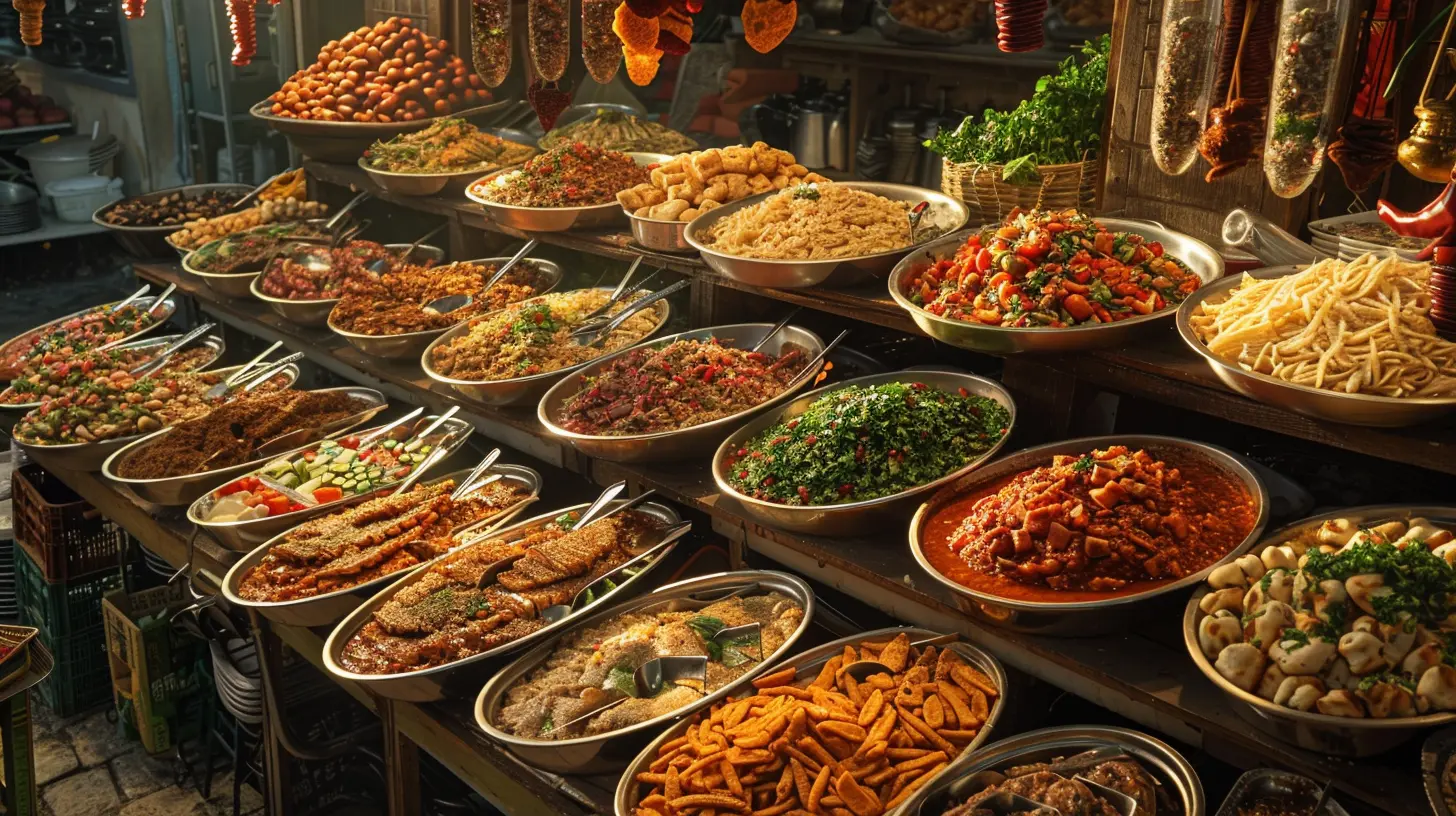Why Street Food is the Heartbeat of Every City
28 October 2025
Introduction
Picture this: You're wandering through the bustling streets of Bangkok, the air thick with the scent of sizzling meat skewers and spicy noodles. Or maybe you're in Mexico City, watching a street vendor expertly flip tacos al pastor, their rich aroma making your stomach growl. No matter where you go, street food is more than just a quick bite—it's the pulse of a city, the symphony of its culture, and the taste of its soul.
But what makes street food so vital to the identity of a city? Let’s dive deep into why street food is much more than just delicious cheap eats and why it truly is the heartbeat of every city. 
A Reflection of Culture and Tradition
Every city has its own unique rhythm, and street food is one of the most authentic expressions of that rhythm. It tells stories of migration, trade, and tradition passed down through generations.Think about it—each dish has roots. The spicy, tangy flavors of Indian chaat date back centuries, blending Persian, Mughal, and local Indian influences. The irresistible aroma of freshly made bánh mì in Vietnam is a remnant of French colonial rule, fused beautifully with native ingredients.
Street food isn’t just a meal; it’s a history lesson served on a plate. When you bite into a dish, you’re tasting centuries of tradition, innovation, and resilience. 
The Best Way to Experience a City Like a Local
Let’s be real—tourist traps and high-end restaurants can only tell you so much about a place. If you really want to know a city, eat where the locals eat.Street food stalls are where everyday people grab their breakfast before work, a quick lunch in between errands, or a late-night snack after a long day. It's raw, it's real, and it’s where you’ll find the most authentic dishes.
Remember the first time you had a piping hot bowl of pho from a tiny roadside stall in Hanoi? Or the joy of biting into fresh empanadas from a vendor in Buenos Aires? These aren’t just meals; they’re experiences that connect you to the local way of life. 
Affordable Yet Unforgettable
Let’s face it—sometimes the best meals don’t come from fancy restaurants with white tablecloths and Michelin stars. Many times, the most unforgettable bites are found on the street, served on a paper plate or in a banana leaf, at a fraction of the price.A $2 banh mi in Vietnam, a 50-cent pani puri in India, or a $1 taco in Mexico—cheap, yes, but packed with flavors that rival any fine dining experience. Street food proves that you don’t need to spend a fortune to eat like a king.
And let’s not forget the joy of watching your food being prepared right in front of you—the sizzling grills, the rhythmic chopping, the tossing of ingredients in a wok—it’s dinner and a show! 
A Sensory Overload Like No Other
Have you ever walked through a night market and felt overwhelmed by the sheer explosion of smells, sounds, and sights? That’s the magic of street food. It’s a full-on sensory adventure.The sizzle of meat on the grill, the vibrant colors of freshly cut fruit, the spice-laden air that makes your mouth water—it’s an experience that engages all your senses.
And let’s not ignore the people-watching! Observing locals gather around a street vendor, chatting and laughing over a shared meal, is one of the best ways to feel the true pulse of a city.
Constantly Evolving, Yet Staying True to Its Roots
One of the most incredible things about street food is its ability to evolve while still holding onto tradition.Take New York City’s food trucks, for example. What started as simple hot dog carts has now grown into a vibrant street food scene offering everything from Korean BBQ tacos to gourmet lobster rolls.
Yet, despite these innovations, the essence of street food remains the same—quick, accessible, flavorful, and deeply rooted in local culture. It’s this balance of tradition and evolution that keeps it thriving.
A Great Equalizer
One of the most beautiful things about street food is its ability to bring people together. It breaks down social barriers and welcomes everyone, regardless of class or status.Whether you’re a businessman grabbing a quick bite on your way to work or a backpacker on a budget, street food serves everyone. It’s a shared experience that unites people over a love for good food.
No pretentious menus, no formal dress codes—just you, the food, and the people around you, all enjoying the same simple pleasure.
The Challenges and Resilience of Street Vendors
Despite its importance, street food vendors often face challenges—strict regulations, lack of resources, and sometimes even stigma. Yet, they persist.Many street food vendors are small business owners who have spent years perfecting their craft. Some have been running the same stall for decades, building a loyal customer base that keeps coming back for more.
Their resilience in the face of adversity is what keeps the culture of street food alive. Supporting them means supporting local economies and preserving an essential aspect of a city's identity.
Sustainable and Less Wasteful
Believe it or not, street food is often more sustainable than large-scale restaurant dining. Vendors typically source ingredients locally, minimizing transportation emissions. Many also practice nose-to-tail cooking, using every part of an ingredient to reduce waste.And let’s not forget the minimal packaging! Many street food staples are served in eco-friendly banana leaves, bamboo sticks, or simple paper wraps instead of plastic.
Eating street food isn’t just delicious—it’s often a more sustainable choice for the planet.
Street Food—More Than Just a Meal
At its core, street food is more than just a convenient way to eat. It’s a connection to history, a celebration of culture, and a reflection of a city’s identity. It’s the heartbeat of urban life, pulsating through the streets, bringing people together, and telling the stories of those who make it.So, the next time you find yourself in a new city, skip the fancy restaurants and head straight to the streets. Because if you really want to taste the soul of a place, street food is the way to go.
### What’s the best street food you’ve ever had? Let’s hear your stories in the comments!
all images in this post were generated using AI tools
Category:
Street FoodAuthor:

Reed McFadden
Discussion
rate this article
1 comments
Marissa Lawson
Absolutely loved this piece! Street food truly captures the essence of a city's culture and community. It’s a delicious way to connect with locals and experience the vibrant flavors of each destination. Great insights!
October 31, 2025 at 6:08 AM

Reed McFadden
Thank you so much! I'm glad you enjoyed it and agree—street food really does bring communities together and reflects the soul of a city!


